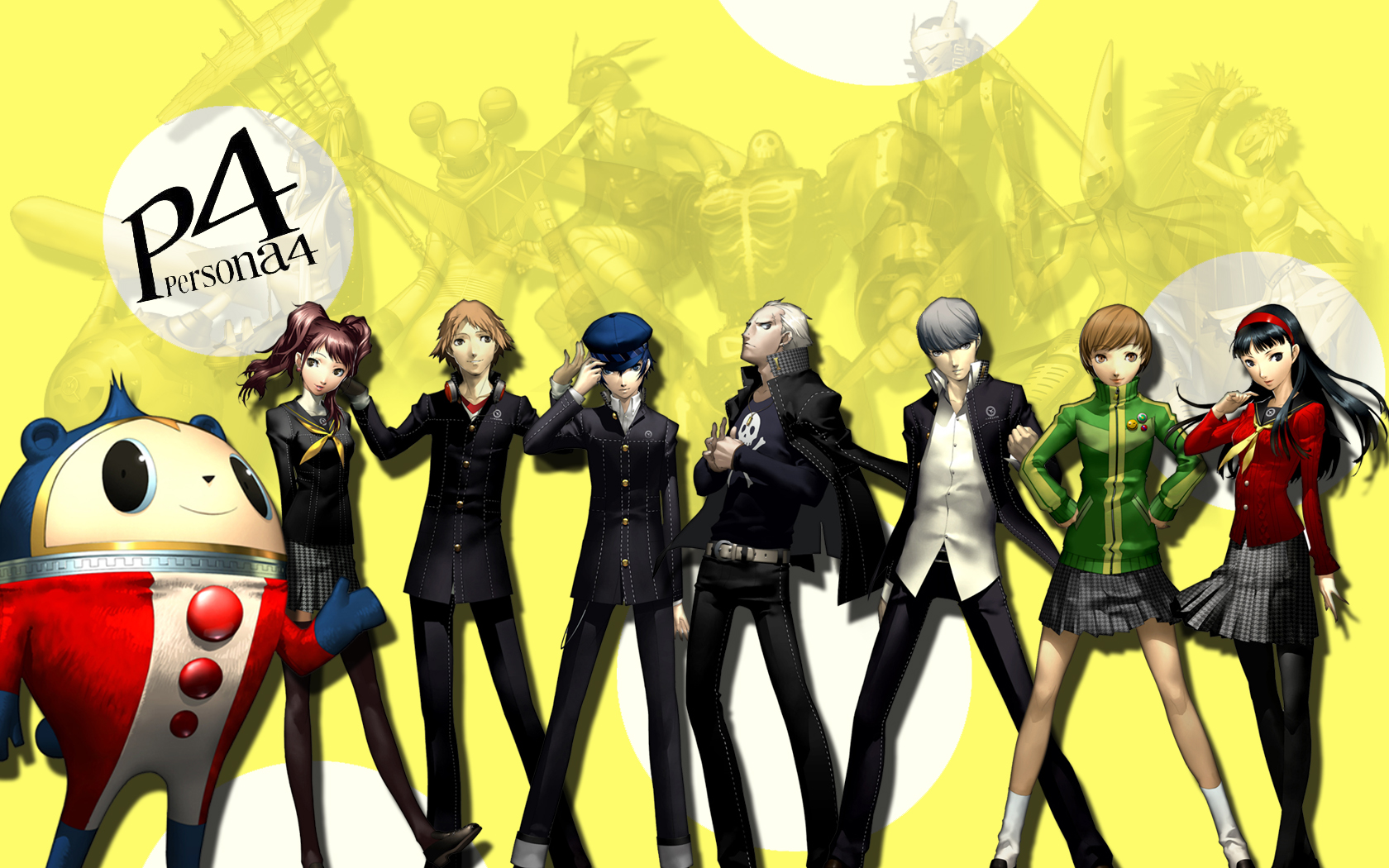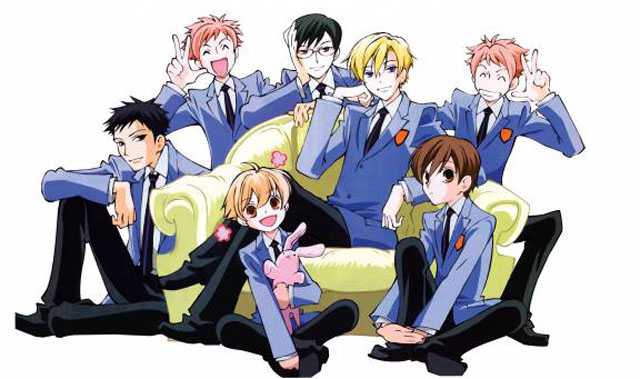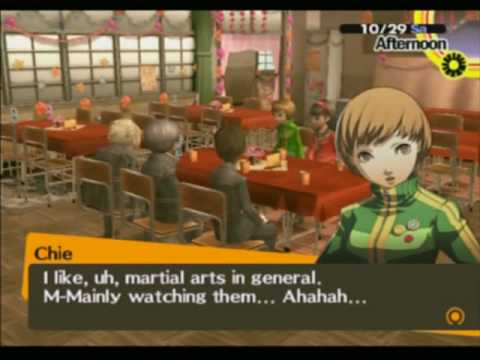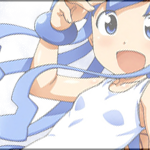Tempest’s Downpour – Anime In-Jokes 4: School Life Edition
After a long night piloting mechas and transforming into magical superheroes, what do our favorite anime characters have to look forward to the next day? School, of course! But any first-time anime viewer should immediately notice that school life in Japan is considerably different than in most other countries.
The first noticeable differences are uniforms and styles. Starting in secondary school (grade 7) every student is required to wear a uniform in both public and private schools. The male school uniform is modeled after Meiji-era military dress while the women’s seifuku (“sailor uniform”) is based on the uniform used by the British Royal Navy in the 1920’s. The girl’s uniform generally consists of a blouse with an attached sailor-style collar and a pleated skirt. [1]

The Persona 4 crew wearing variations of their school uniforms (not including Teddie).
Students wear a lighter version of the uniform, including short-sleeved blouses, during the summer seasons. There is also a specific uniform designated for gym activities that include a winter track suit or t-shirt and shorts for men, and a t-shirt and buruma for women. Buruma (“bloomers”) are a type of athletic short where no cloth covers the legs, leaving a full range of motion for activities such as gymnastics [2].
According to every anime I’ve ever seen, gym class is segregated according to gender, but the kind people of yahoo answers say that this isn’t the case as often anymore. Typically there isn’t a locker room or gender-segregated changing room, so students change in the classroom before gym class. As a result, most students wear their sports uniforms under their classroom uniforms.

Kagura wearing the school gym uniform including buruma.
Gym is typically held three times a week. Outside of gym class, students remain in their assigned classrooms for the entirety of the school day, while teachers move to different rooms. There are nearly forty students per classroom on average and each class has a homeroom teacher who doubles as a counselor [3].
Classroom dynamics are hugely different in Japan than, say, America. Typically in Japan, students don’t raise their hands. Instead, when a teacher asks a question, the entire class is supposed to answer in unison, because the ideal is to work cohesively as a group rather than have pressure for individuality and being the best. One by one, students are asked to read out loud to class, though this still constitutes a group activity.

Members of the Ouran High School Host Club.
After school activities are prized almost more than school itself. If a student is not involved in a club or sport after school, it is seen as strange and disappointing. Clubs are seen as a way to build positive interpersonal relations for a well-rounded education.
Another after school activity that may be strange for foreigners is cram school. In Japan, students have to test to get into private schools, and it is seen as an honor if a child attends the more prestigious schools. There was a time when Japan relied on private tutors, but tutors couldn’t keep up with the high demand as entrance exams grew more difficult [4].
Students typically begin attending cram school in elementary school to prepare for secondary school entrance exams, and spend between 2-3 hours a day after school, 3-4 days a week. Over half the population of secondary school students attends a cram school, reported a 1993 Ministry of Education study.
A more fun activity that anime tend to show off is the annual Cultural Festival. Classes and clubs organize performances, dances, mini restaurants and anything else they care to show off to other students and people who just want to visit. Often times food is served, and the activities take up a day or two and the festival happens in the early spring, towards the end of the school year.

Persona 4’s main characters in the rather fail-tastic Group Date Cafe-themed classroom during the Cultural Festival.
A more subtle yet difficult thing for foreign viewers to wrap their brains around is the way the school year is set up, along with school transitions. The Japanese school year starts in April and consists of three terms with short holidays scattered throughout and one month-long summer break that includes homework [6]. Japanese school weeks are typically six days long and they include Saturdays. The school day typically lasts 6 hours a day, one of the longest school days in the world [7]. Meanwhile, elementary school covers grades 1-6, middle school covers 7, 8 and 9, and high school covers 10, 11 and 12.
Typically anime characters are at that difficult time in life where they’re just about to graduate middle school and move onto high school. They have to worry about entrance exams, cram school, after school clubs, along with all the pain of adolescence. Plus, they have to achieve great grades and deal with romance. I don’t know how they handle all of that.
-
References:
- [1] http://en.wikipedia.org/wiki/Japanese_school_uniform
- [2] http://en.wikipedia.org/wiki/Bloomers_%28clothing%29
- [3] http://en.wikipedia.org/wiki/Secondary_education_in_Japan
- [4] http://japanese.about.com/library/weekly/aa062400.htm
- [5] http://en.wikipedia.org/wiki/Japanese_Cultural_Festival
- [6] http://www.japan-guide.com/e/e2150.html
- [7] http://japanese.about.com/od/japaneselessons/a/061000.htm
Also a big help in my Otaku education was The Anime Companion by Gilles Poitras. Sadly I could not cite direct quotes from the book because I do not have it at my disposal.
Did I forget anything? Do you have any further questions? Feel free to ask by leaving a comment, chatting about it in the IRC or by PMing me on the forums.

















this was a good article tempest
I guess I’ve seen it in anime but I didn’t understand before that students stay in the same classroom and its the teachers that move. Makes the class change over less interesting event.
And the school on Saturdays I don’t think that’s quite right these days. You might want to dbl-check. From what I know since around 2002 (to help reduce student-stress) most Japanese public schools are Mon-Fri, while some of the private schools still do have a half day (until noon) on Saturday.
*bookmarks* This is great, I’ve been looking for something like this to show my Education Teacher about the Japan school systems. Keep it up!
Tempest: Raising the bar for 918 content.
toyNN I had classes like that all my life, we’d never leave our classes and was assigned one room throughout the whole year, and our teachers would come to us. It was also required of us to wear uniforms. Hot…hot uniforms ;_;
That was a really nice read Tempest :’D!
@Lilian – interesting, did you go to school in USA?
@Tempest – sorry if I didnt add it was a great article.
The thing about being in same classroom now I better get why you see many Japanese students pulling their desks together to eat lunch.